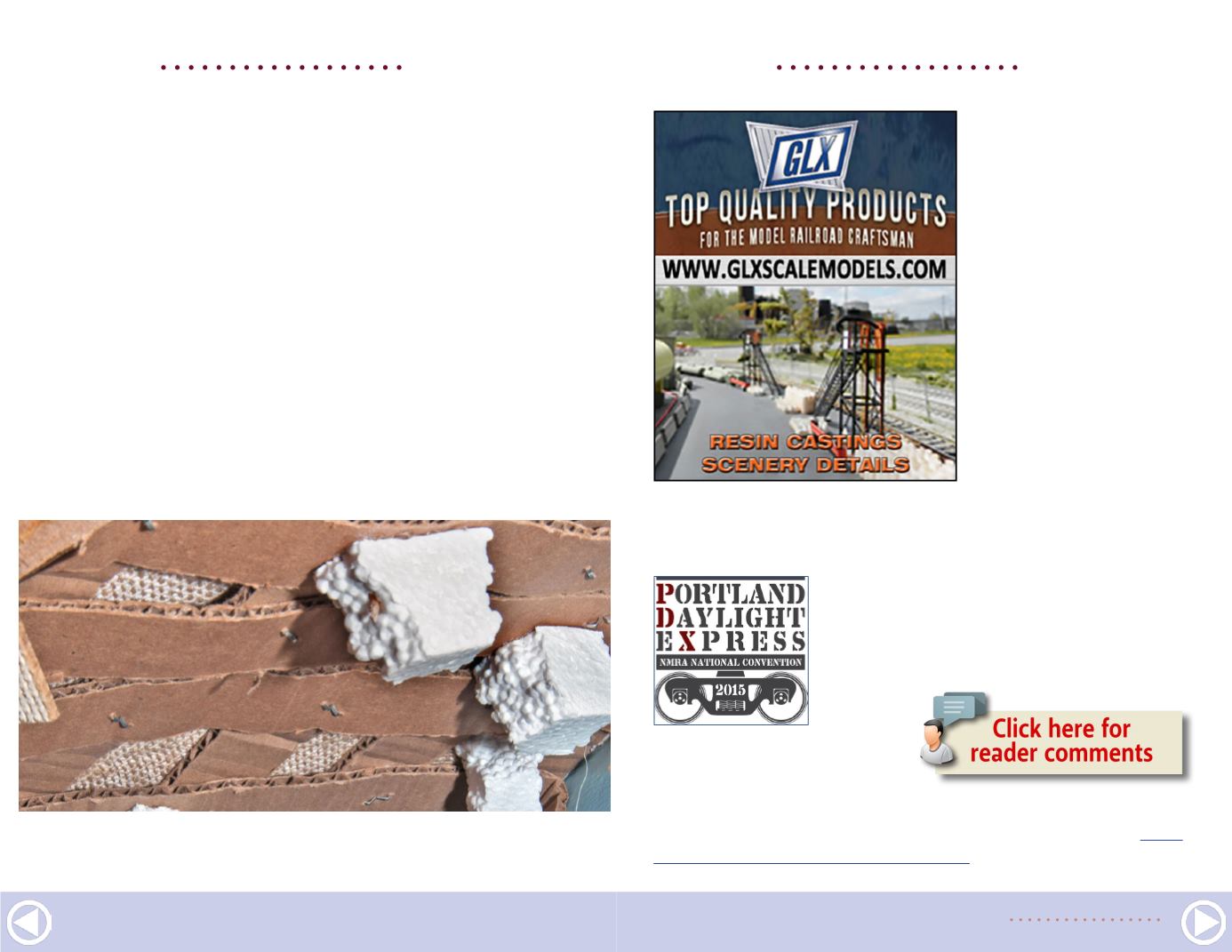
Although model railroad-
ers are accustomed to
using higher quality plas-
tic foam insulation for
scenery work, they should
not be tempted to use it
for tree support blocks.
The support wires, even
if sharpened, will create
large voids as they pen-
etrate that type of plastic
foam. The bead texture
material allows the sup-
port wires to penetrate
cleanly and anchor firmly.
Acknowledgments
The authors would like to thank fellow club members Steve
Cook and Dennis Markovich, who originally suggested and
discussed using burlap for scenery support.
See us at the PDX-Express
NMRA National Convention in
Portland, OR in 2015!
More about the Willamette Model Railroad Club
at
☑
BURLAP HARDSHELL |
13
beneath the site of each tree. A thin wooden support like a
barbecue skewer, cotton swab handle sharpened on one end,
or a long, round toothpick, is hot-glued to the back of each tree
trunk. The support extends down about 1½ inches below the
bottom of the tree trunk.
Modelers who want even stronger tree supports may want
to try pieces of coat hanger wire or, for ultimate strength,
sharpen the ends of pieces of the heavy wire from excavation
marker flags available from the Home Depot plumbing supply
department.
Planting trees becomes a three-step procedure: A foam block is
glued to the underside of the scenery below the site of the tree,
a small hole to accept the tree support is drilled or punched
through the plaster layer above the foam block, and the tree sup-
port is placed through the hole and into the foam block below.
15. Beaded foam plastic blocks hot-glued to the underside of
the hardshell will hold the trees in place.
BURLAP HARDSHELL |
14
ADVERT I SEMENT


